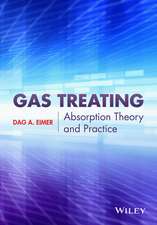The mechanics of the contact between deformable bodies: Proceedings of the symposium of the International Union of Theoretical and Applied Mechanics (IUTAM) Enschede, Netherlands, 20–23 August 1974
Editat de A.D. de Pater, J.J. Kalkeren Limba Engleză Paperback – 19 mai 2012
Preț: 574.15 lei
Preț vechi: 717.69 lei
-20% Nou
Puncte Express: 861
Preț estimativ în valută:
109.88€ • 114.29$ • 90.71£
109.88€ • 114.29$ • 90.71£
Carte tipărită la comandă
Livrare economică 10-16 aprilie
Preluare comenzi: 021 569.72.76
Specificații
ISBN-13: 9789401181396
ISBN-10: 940118139X
Pagini: 432
Ilustrații: 427 p. 84 illus.
Dimensiuni: 156 x 244 x 23 mm
Ediția:Softcover reprint of the original 1st ed. 1975
Editura: SPRINGER NETHERLANDS
Colecția Springer
Locul publicării:Dordrecht, Netherlands
ISBN-10: 940118139X
Pagini: 432
Ilustrații: 427 p. 84 illus.
Dimensiuni: 156 x 244 x 23 mm
Ediția:Softcover reprint of the original 1st ed. 1975
Editura: SPRINGER NETHERLANDS
Colecția Springer
Locul publicării:Dordrecht, Netherlands
Public țintă
ResearchCuprins
Aspects of contact mechanics.- Non-Hertzian contact of elastic spheres.- Signorini’s problem in viscoelasticity.- Properties of elastic bodies in contact.- Similarity considerations for contact between dissimilar elastic bodies.- Consideration of the theory of cracks from the point of view of contact problems of the theory of elasticity.- Certain asymmetrical contact problems for a half-space.- Unbonded contact between a circular plate and an elastic foundation.- On the two-dimensional contact problem of a rigid cylinder, pressed between two elastic layers.- Influence of an elastic layer on the tangential compliance of bodies in contact.- Small scale plastic flow associated with rolling.- Heat effects in rolling contact.- Thermoelastic contact problems.- An axisymmetric contact patch configuration for two slabs in frictionally heated contact.- Dynamic contact stresses produced by impact in elastic plates of finite thickness.- Transition of collision contact force between a visco- elastic half-space and a flat-headed rigid body.- Impact on a worn surface.- The normal contact of arbitrarily shaped multilayered elastic bodies.- Contact stresses for multiply-connected regions — the case of pitted spheres.- Stylus profilometry and the analysis of the contact of rough surfaces.- The interaction and lubrication of rough surfaces.- Contact of rough surfaces of work- hardening materials.- Factors influencing the real trend of the coefficient of friction of two elastic bodies rolling over each other in the presence of dry friction.- The frictional contact of rubber.- Applications for contact theories in nuclear reactor technology.- Linearized contact vibration analysis.












